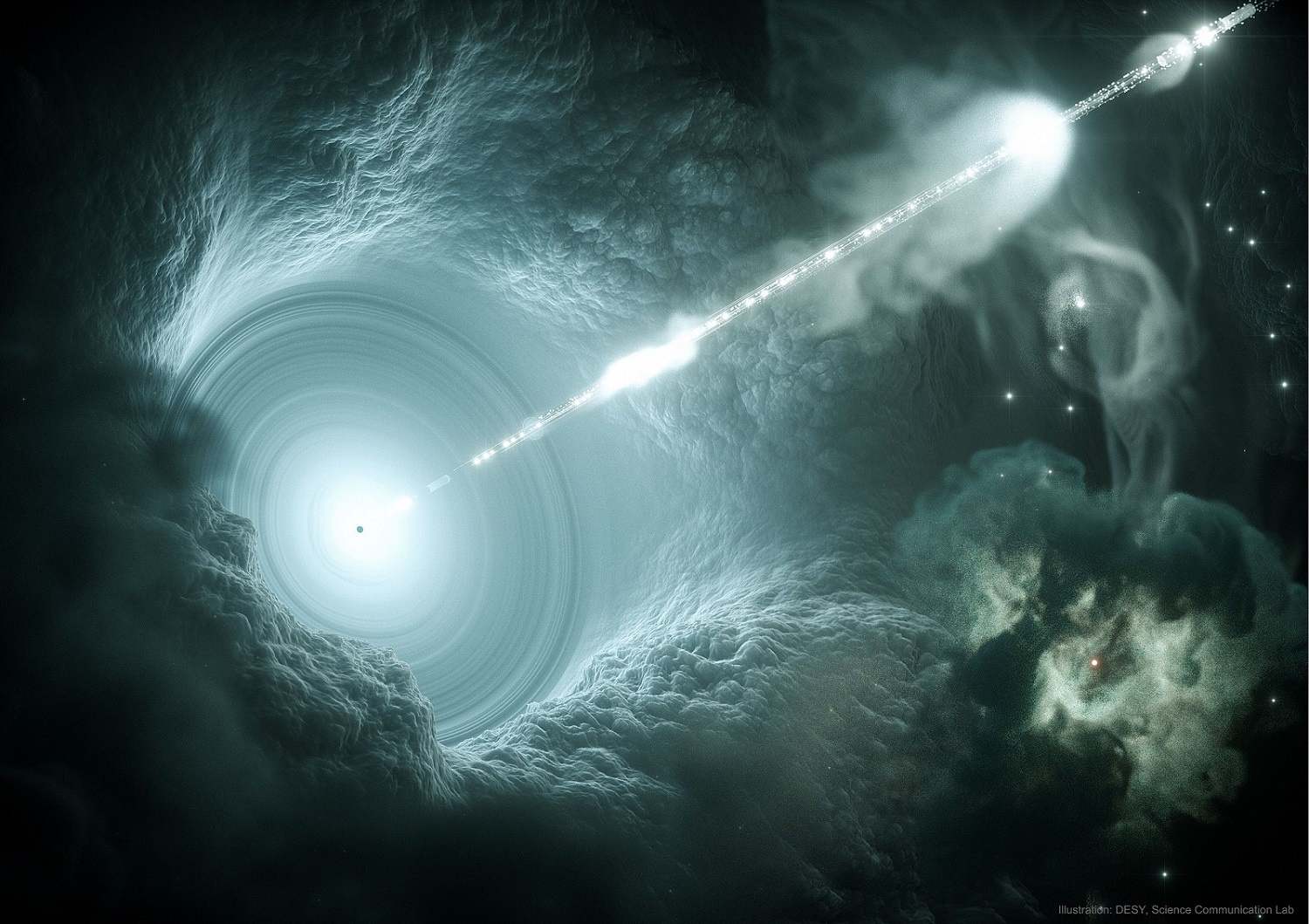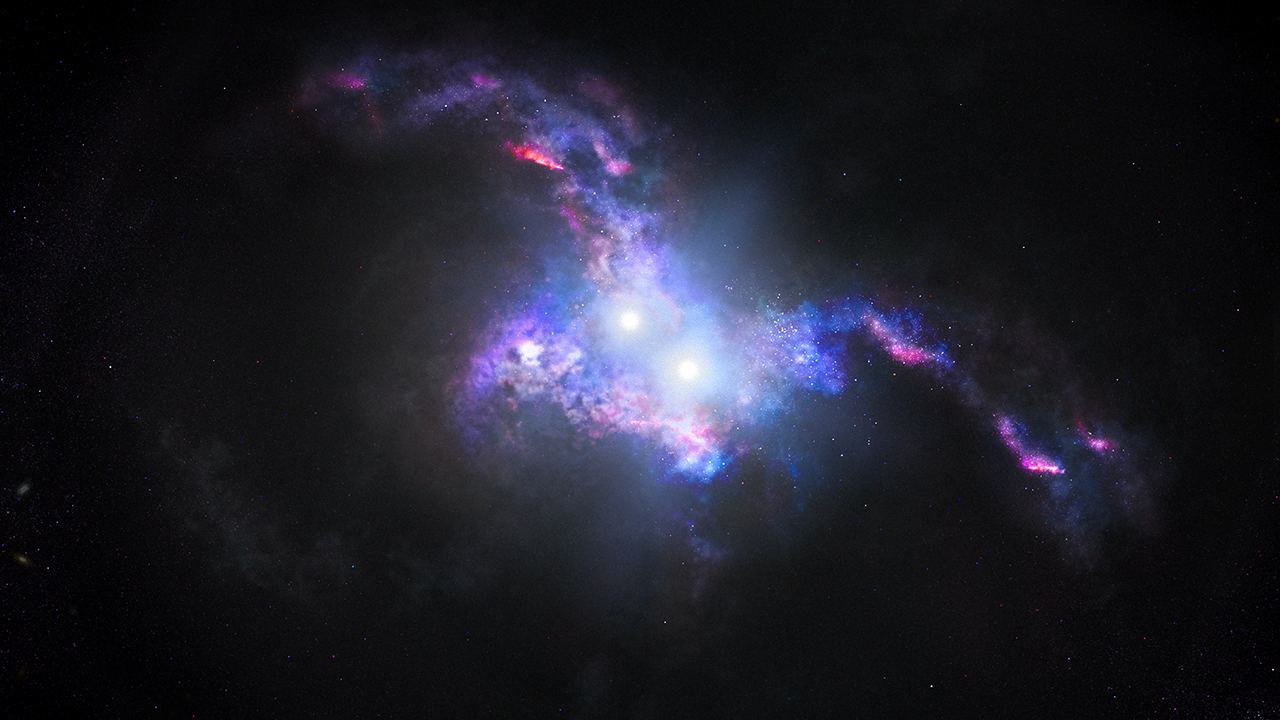The first black holes to appear in the universe may have formed from the direct collapse of gas. When they collapsed, they released a flood of radiation, including radio waves. A new study has found that the next generation of massive radio telescopes may be able to detect these bursts, giving precious insights into a critical epoch in the history of the universe.
Continue reading “Next Generation Telescopes Could Detect the Direct Collapse of Enormous Black Holes Near the Beginning of Time”This is How a Supermassive Black Hole Feeds
At the heart of most massive galaxies in our Universe, there are supermassive black holes (SMBH) on the order of millions to billions of times the mass of the Sun. As these behemoths consume gas and dust that’s slowly fed into their maws, they release tremendous amounts of energy. This leads to what is known as an Active Galactic Nucleus (AGN) – aka. a quasar – which can sometimes send hypervelocity jets of material for light-years.
Since they were first discovered, astrophysicists have suspected that SMBHs play an important role in the formation and evolution of galaxies. However, as a result, there has also been considerable research dedicated to how these massive objects form and evolve themselves. Recently, a team of astrophysicists conducted a high-powered simulation that showed exactly how SMBHs feed and determined that a galaxy’s arms play a vital role.
Continue reading “This is How a Supermassive Black Hole Feeds”You can Tell how big a Black Hole is by how it Eats

Black holes don’t emit light, which makes them difficult to study. Fortunately, many black holes are loud eaters. As they consume nearby matter, surrounding material is superheated. As a result, the material can glow intensely, or be thrown away from the black hole as relativistic jets. By studying the light from this material we can study black holes. And as a recent study shows, we can even determine their size.
Continue reading “You can Tell how big a Black Hole is by how it Eats”Astronomers see a Rare “Double Quasar” in a Pair of Merging Galaxies
What’s better than a quasar? That’s right, two quasars. Astronomers have spotted for the first time two rare double-quasars, and the results show us the dynamic, messy consequences of galaxy formation.
Continue reading “Astronomers see a Rare “Double Quasar” in a Pair of Merging Galaxies”A new Technique Could use Quasars to Directly Measure the Expansion Rate of the Universe
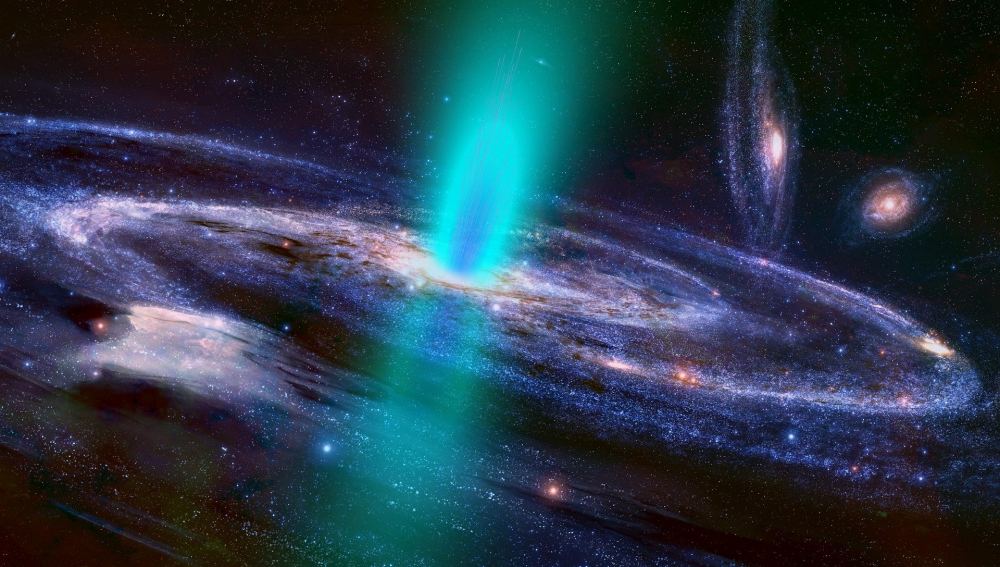
One of the biggest challenges to measuring the expansion of the universe is the fact that many of the methods we use are model-dependent. The most famous example is the use of distant supernovae, where we compare the standard brightness of a Type Ia supernova with their apparent brightness to find their distance. But knowing the standard brightness depends upon comparing them to the brightness of Cepheid variables which is in turn determined by measuring the distances of nearby stars via parallax. Every step of this cosmic distance ladder depends upon the step before it.
Continue reading “A new Technique Could use Quasars to Directly Measure the Expansion Rate of the Universe”Almost all High-Energy Neutrinos Come From Quasars
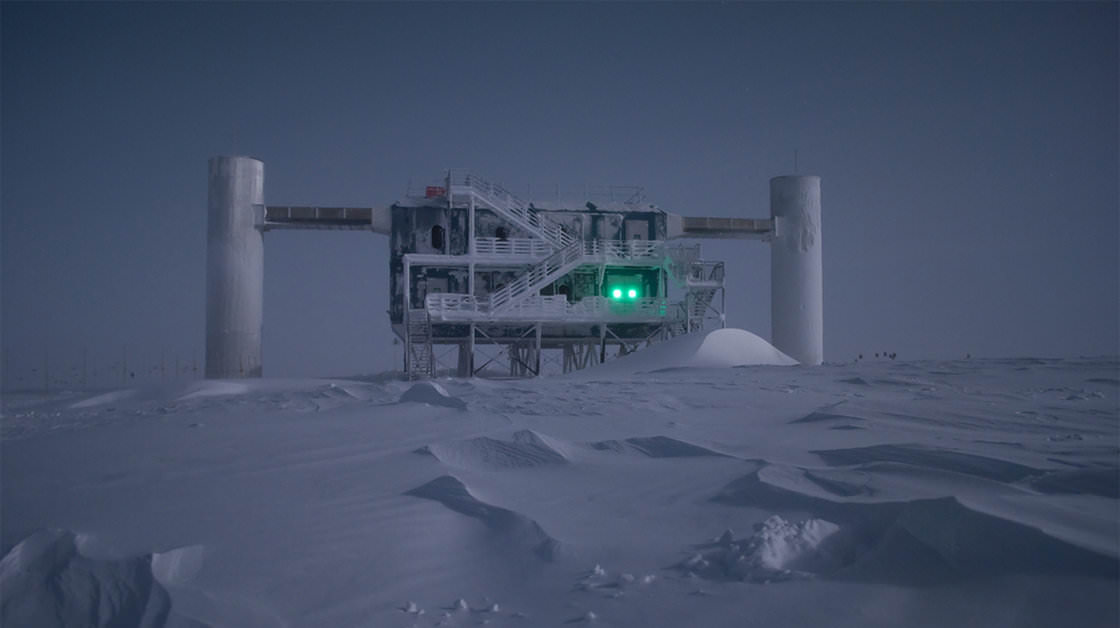
Buried under the ice at the South Pole is a neutrino observatory called IceCube. Every now and then IceCube will detect a particularly high-energy neutrino from space. Some of them are so high energy we aren’t entirely sure what causes them. But a new article points to quasars as the culprit.
Continue reading “Almost all High-Energy Neutrinos Come From Quasars”A New Technique to Find Cold Gas Streams That Might Make up the Missing (Normal) Matter in the Universe
Where is all the missing matter? That question has plagued astronomers for decades, because the Universe looks emptier than it should, given current theories about its makeup. Most of the Universe (70%) appears to be composed of Dark Energy, the mysterious force which is causing the Universe’s rate of expansion to increase. Another 25% of the Universe is Dark Matter, an unknown substance which cannot be seen, but has been theorized to explain the otherwise inexplicable gravitational forces which govern the formation of galaxies. That leaves Baryonic Matter – all the normal ‘stuff’ like you, me, the trees, the planets, and the stars – to make up just 5% of the Universe. But when astronomers look out into the sky, there doesn’t even seem to be enough normal matter to make up 5%. Some of the normal matter is missing!
Continue reading “A New Technique to Find Cold Gas Streams That Might Make up the Missing (Normal) Matter in the Universe”Astronomers are Starting to Understand the Quasar Lifecycle

Supermassive black holes have a complicated lifecycle. Sometimes they’re “on”, blasting out tremendous amounts of energy, and sometimes they’re “off’, where they sleep like dragons in their caves. By comparing the proportion of high-energy to low-energy waves emitted by quasars, astronomers are beginning to pin down how many black holes are sleeping, and when they’re likely to wake back up.
Continue reading “Astronomers are Starting to Understand the Quasar Lifecycle”Gravitational lenses could be the key to measuring the expansion rate of the Universe
One of the tenets of our cosmological model is that the universe is expanding. For reasons we still don’t fully understand, space itself is stretching over time. It’s a strange idea to wrap your head around, but the evidence for it is conclusive. It is not simply that galaxies appear to be moving away from us, as seen by their redshift. Distant galaxies also appear larger than they should due to cosmic expansion. They are also distributed in superclusters separated by large voids. Then there is the cosmic microwave background, where even its small fluctuations in temperature confirm cosmic expansion.
Continue reading “Gravitational lenses could be the key to measuring the expansion rate of the Universe”Quasars can twinkle?
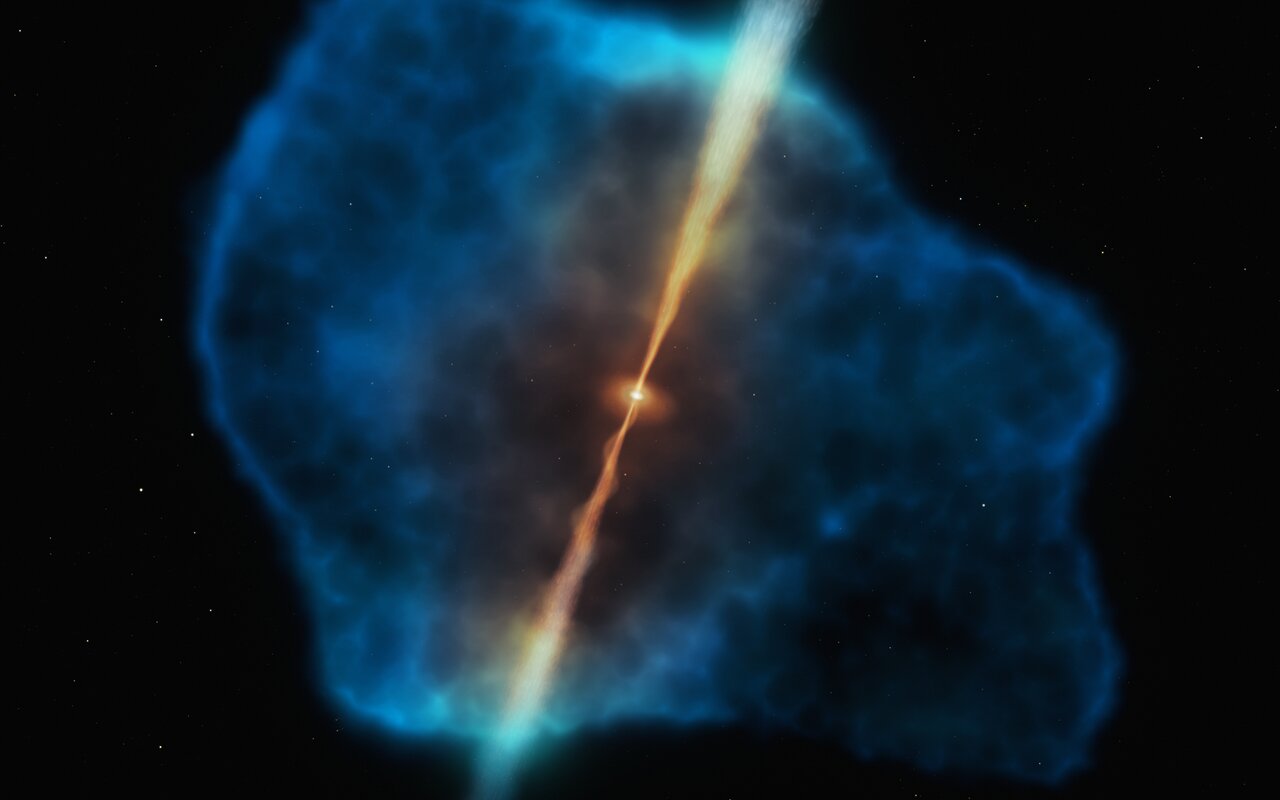
It turns out you can teach an old dog new tricks. With a recent upgrade to a 50-year-old radio telescope, astronomers have spotted nearly a dozen of a rare class of quasars, ones capable of flickering in less than an hour.
Continue reading “Quasars can twinkle?”

